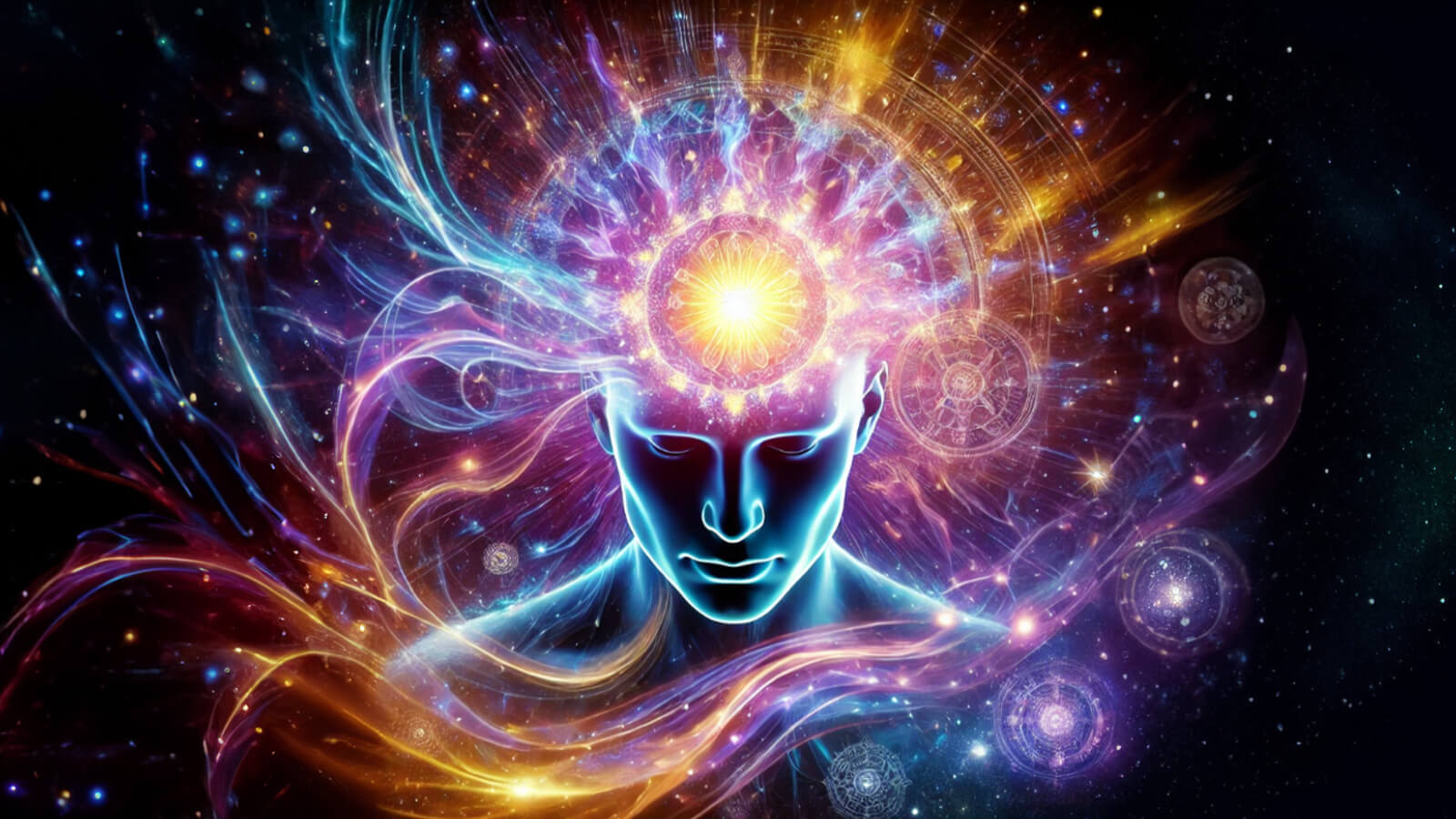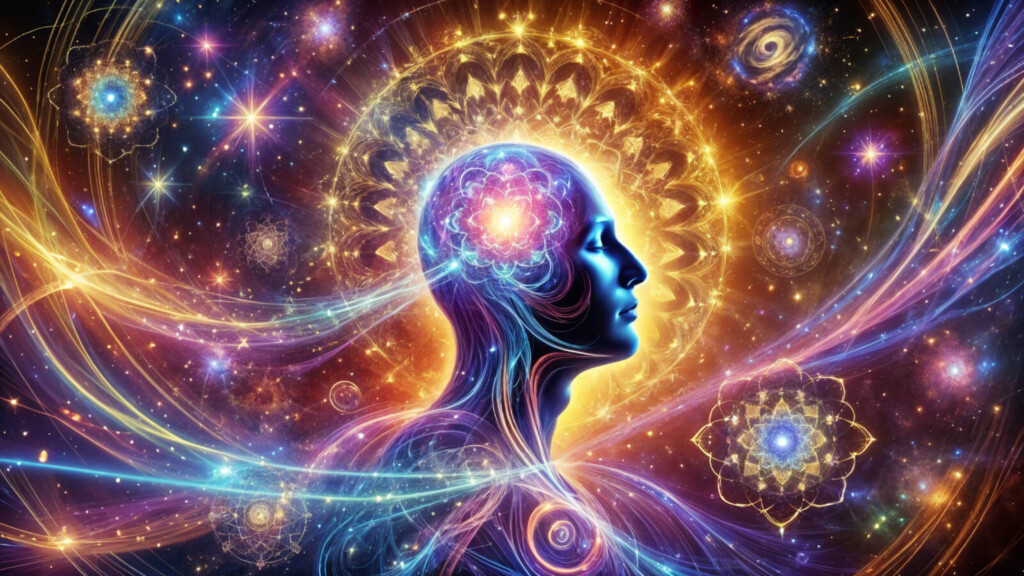Understanding the Psychospiritual Journey: A Confluence of Psychology and Spirituality
(Based on the live discourse of Param Dwij)
(परम द्विज के प्रवचन पर आधारित)

The human experience is a tapestry woven from threads of emotions, thoughts, and existential quests. At its core lies a profound yearning to make sense of ourselves and the universe we inhabit. The psychospiritual journey, a transformative pathway that merges psychology and spirituality, is a catalyst for inner growth, healing, and transcendence. It integrates the mind, body, and soul, offering individuals a holistic understanding of their existence and their place in the cosmos.
The Foundation of Psychospirituality
Psychospirituality is the bridge between the psychological understanding of the human mind and the spiritual pursuit of deeper meaning and connection. Psychology delves into the mechanisms of thought, emotion, and behaviour, while spirituality explores the essence of being, the soul, and the universal consciousness. Together, they form a symbiotic relationship that addresses both the analytical and the transcendental dimensions of human existence.
Key principles of psychospirituality include:
- Self-Awareness: Understanding one’s thoughts, emotions, and actions through intentional introspection and mindfulness.
- Integration: Harmonizing the conscious and unconscious aspects of the psyche to foster inner coherence and balance.
- Connection: Cultivating a sense of unity with oneself, others, and the cosmos, thereby nurturing relationships and community.
- Transformation: Embracing change and growth through inner work external experiences, and embracing the impermanence of life.
The Psychological Perspective
Psychology, particularly humanistic and transpersonal psychology, plays a crucial role in the psychospiritual framework. Humanistic psychology emphasizes personal growth, self-actualization, and the inherent goodness of individuals. On the other hand, Transpersonal psychology extends beyond the personal to explore spiritual dimensions, mystical experiences, and states of higher consciousness.
Carl Jung, one of the pioneers of psychospiritual integration, introduced concepts like the collective unconscious, archetypes, and individuation. He believed that the journey to self-realization involves confronting and integrating the shadow—the suppressed aspects of our psyche—and aligning with the Self, the archetype of wholeness. Jung’s work underscores the importance of symbols, dreams, and myths as guides for navigating the inner world.

Modern psychology also acknowledges the therapeutic potential of psychospiritual practices like mindfulness, meditation, and breathwork. These techniques not only alleviate stress and anxiety but also foster emotional resilience and spiritual awakening. Research continues to reveal the neurobiological benefits of these practices, including enhanced brain plasticity and emotional regulation.
The Spiritual Perspective
Spirituality transcends religious doctrines, focusing on the essence of existence and the interconnectedness of all life. It encourages individuals to explore their inner world, seek purpose, and cultivate virtues like compassion, gratitude, and humility. Spirituality is not limited to a specific faith or practice but encompasses a universal quest for meaning and connection.
Spiritual traditions across cultures emphasize the importance of self-inquiry and surrender. For instance:
- In Hinduism, the concept of “Atman” (the inner self) and its unity with “Brahman” (universal consciousness) underscores spiritual growth and the journey toward self-realization.
- Buddhism advocates for mindfulness, meditation, and the Eightfold Path as a means to attain enlightenment and liberation from suffering.
- Mystical Christianity and Sufism highlight the significance of divine love and union with the Creator, emphasizing the transformative power of devotion and surrender.
Psychospirituality integrates these teachings, making them accessible within the psychological context. It encourages individuals to transcend ego-based limitations and align with their higher self. By exploring these teachings, people can find practical tools to navigate life’s challenges while staying rooted in their spiritual essence.
The Role of the Ego and the Higher Self
The ego, often misunderstood, is not inherently negative. It acts as a mediator between our inner and outer worlds, helping us navigate daily life and make sense of our experiences. However, an over-identified ego can lead to self-centeredness, fear, and disconnection from our true nature. Such an ego-centric perspective often fuels feelings of isolation and conflict, both internally and externally. Understanding and managing the ego is a crucial part of the psychospiritual journey.
The higher self represents our authentic essence—a state of inner wisdom, peace, and unconditional love. The psychospiritual journey involves balancing the ego’s practical functions with the higher self’s guidance. This balance fosters a harmonious existence, enabling individuals to live authentically and purposefully. By aligning with the higher self, individuals can tap into their intuition and creativity, transcending the limitations imposed by the ego.
Tools and Practices for Psychospiritual Growth
- Meditation and Mindfulness: These practices anchor individuals in the present moment, fostering clarity, inner peace, and spiritual awareness. Meditation, in particular, can serve as a gateway to altered states of consciousness and profound inner insight.
- Journaling: Writing down thoughts and emotions aids in self-reflection and insight into deeper patterns. Journaling can reveal unconscious beliefs and provide a record of personal growth.
- Breathwork: Conscious breathing techniques regulate the nervous system and facilitate emotional release. Practices like pranayama and holotropic breathwork have been shown to deepen the connection to the self and spirit.
- Nature Connection: Spending time in nature nurtures a sense of wonder, grounding, and unity. Nature acts as a mirror to the soul, providing a serene backdrop for contemplation.
- Shadow Work: Confronting and integrating suppressed aspects of the psyche leads to wholeness. This process often involves exploring past traumas, fears, and unresolved emotions.
- Therapeutic Modalities: Practices like art therapy, yoga, and sound healing enhance psychospiritual exploration. These creative and somatic methods help bridge the gap between the psychological and spiritual realms.
- Community and Support: Engaging with like-minded individuals in spiritual or therapeutic settings fosters connection and collective healing.
Challenges on the Psychospiritual Path
The journey of psychospirituality is not without its hurdles. Individuals often encounter what is known as the ‘dark night of the soul’—a period of profound existential crisis and emotional turmoil. This phase, though challenging, serves as a catalyst for transformation, helping individuals shed old patterns and embrace their authentic selves. The dark night of the soul often feels like a descent into darkness, but it is also a prelude to profound awakening and renewal. Understanding these challenges can help individuals navigate them with perseverance and self-compassion.
Resistance to change, societal conditioning, and fear of the unknown are common obstacles. These challenges may manifest as self-doubt, inertia, or external opposition. However, these barriers can be overcome with perseverance, guidance, and self-compassion. Seeking support from mentors, therapists, or spiritual teachers can provide valuable insights and encouragement during difficult times.
Psychospirituality in Modern Life
In today’s fast-paced world, psychospiritual practices offer a sanctuary for individuals seeking balance and meaning. They equip them with tools to navigate stress, build emotional intelligence, and cultivate resilience. By integrating psychospiritual practices into daily routines, individuals can experience enhanced well-being and a deeper connection to life.
Furthermore, the corporate world has begun recognizing the value of psychospirituality. Programs promoting mindfulness, emotional intelligence, and workplace spirituality are increasingly popular, fostering healthier and more productive environments. Leaders who embody psychospiritual principles often inspire teams with their authenticity, empathy, and vision.
Psychospirituality also resonates in education, where mindfulness and emotional literacy programs are being introduced to nurture holistic student development. Such initiatives underscore the growing recognition of the importance of integrating psychological and spiritual dimensions into various aspects of modern life.
The Future of Psychospirituality
As humanity continues to evolve, the integration of psychology and spirituality will likely gain prominence. Advances in neuroscience and quantum physics are already shedding light on the interconnectedness of mind, body, and spirit. Psychospirituality has the potential to bridge the gap between science and spirituality, offering a unified perspective on human existence.
The future may witness the development of new therapeutic modalities that seamlessly integrate psychospiritual principles. Innovations in technology, such as virtual reality and biofeedback, could also enhance psycho-spiritual practices by providing immersive experiences of meditation, visualization, and self-exploration. Additionally, cross-disciplinary collaborations between scientists, philosophers, and spiritual leaders may further enrich this field.
Conclusion
The psychospiritual journey is an invitation to explore the depths of the psyche and the heights of the spirit. It is a path of self-discovery, healing, and transformation that aligns individuals with their true essence. By embracing psychological insights and spiritual wisdom, we can unlock the infinite potential and contribute to a more harmonious world. In Carl Jung’s words, “Who looks outside, dreams; who looks inside, awakes.” The psychospiritual journey beckons us to awaken to our inner truth and embark on a voyage of profound self-realization. Through this union of psychology and spirituality, we find personal fulfilment and the ability to positively impact the world around us, creating ripples of transformation that extend far beyond ourselves.



